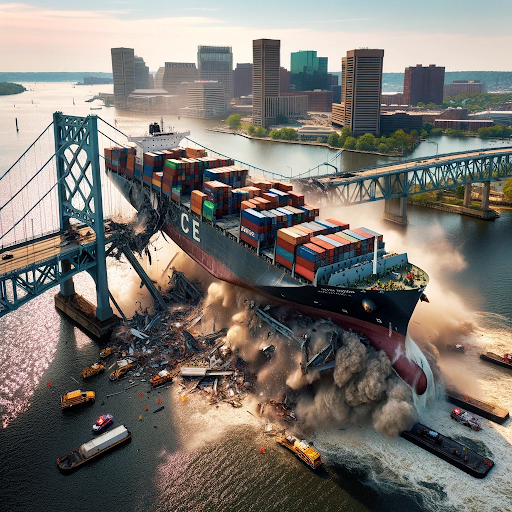HD Hyundai Sued Over Key Bridge Collapse Switchboard Fault

As legal proceedings continue following the March 26, 2024, collision between the containership Dali and the Francis Scott Key Bridge—which led to the bridge’s collapse, the deaths of six workers, and the shutdown of Baltimore port activity—the ship’s owner and operator have initiated a new legal challenge.
On July 31, Grace Ocean, the Dali’s owner, and Synergy Marine, its operator, filed a product liability lawsuit in the US District Court for the Eastern District of Pennsylvania. The suit targets South Korea’s HD Hyundai Heavy Industries, alleging the firm defectively designed and installed a key electrical switchboard on the Dali. According to the complaint, faults in wiring and the terminal block contributed to a blackout that ultimately rendered the vessel powerless just before the fatal impact.
Central to the claim is the under-voltage release (UVR) circuit on a breaker. The plaintiffs assert that a mispositioned label near the ferrule of a control wire prevented proper seating in its spring-clamp terminal block. This flawed contact led to an open circuit, they argue, cutting voltage to the UVR coil and causing a breaker trip that initiated the 440V blackout—crippling propulsion and steering as the ship neared the bridge.
Investigators from the NTSB, US Coast Guard, and others had long considered the Dali’s electrical systems as a likely root cause. In a June 2024 update, the NTSB confirmed that a control circuit interruption linked to the main breakers likely triggered the blackout. Supporting documents indicated HD Hyundai engineers had acknowledged that such faulty connections could produce the exact failure replicated later in test scenarios.
The Dali had previously experienced power system failures. An NTSB report cited electrical issues during in-port maintenance the day before the incident, and other unexpected trips that followed the vessel’s departure. The report also flagged broader concerns about the ship’s condition, noting irregular maintenance and questionable seaworthiness—points echoed in various legal claims.
Adding to the complex legal web, the US Department of Justice filed a $100 million lawsuit in September 2024, accusing Grace Ocean and Synergy Marine of knowingly operating an unseaworthy vessel in US waters and failing to report critical issues. Maryland’s state government also filed a separate suit seeking recovery for bridge reconstruction and associated damages, citing ignored defects and maintenance failures.
Meanwhile, Grace Ocean and Synergy are pursuing a limitation-of-liability defense, aiming to reduce their financial exposure and redirect some of the responsibility toward the shipbuilder and public entities.
HD Hyundai has been officially served and is expected to issue a response soon.